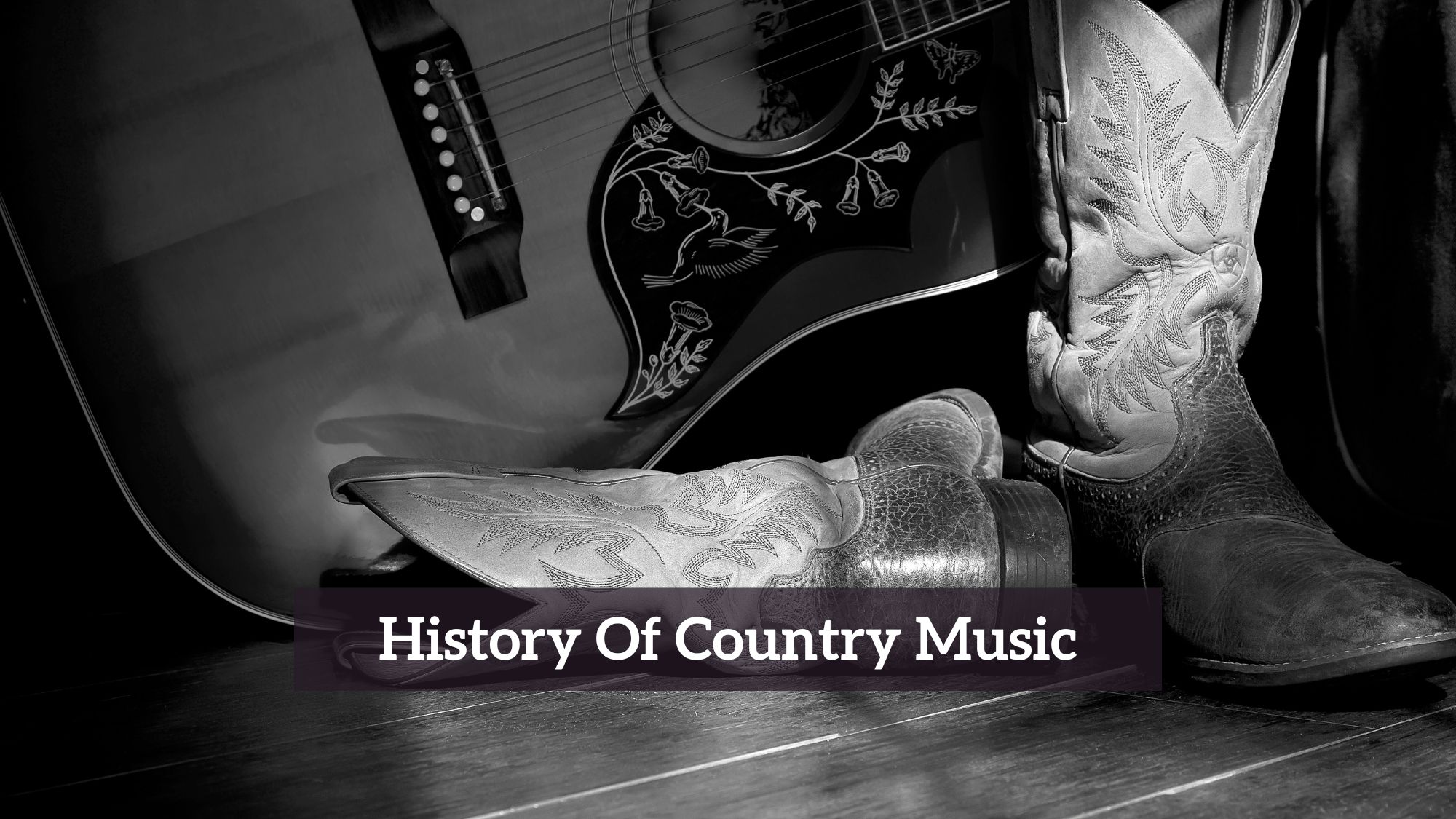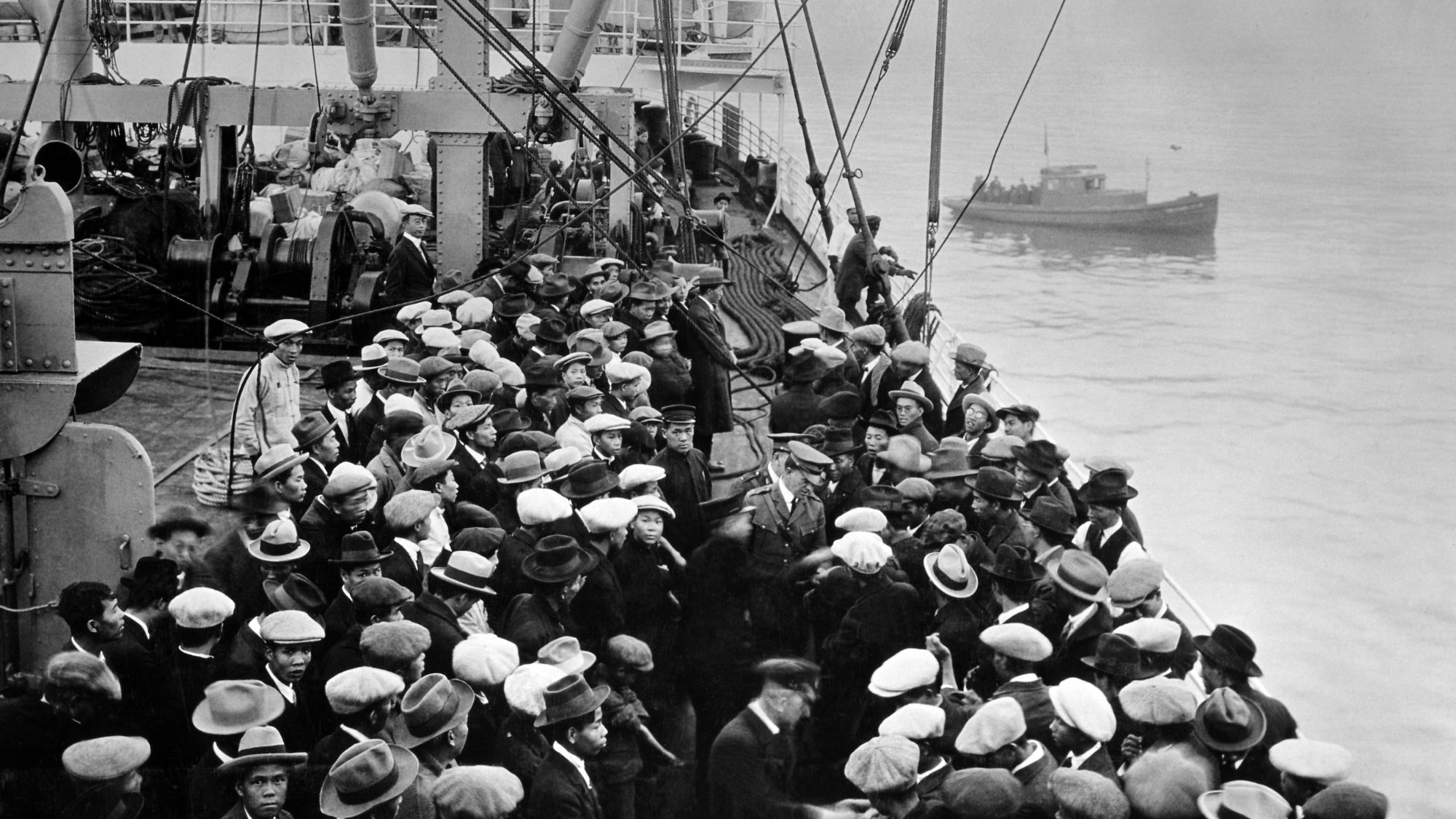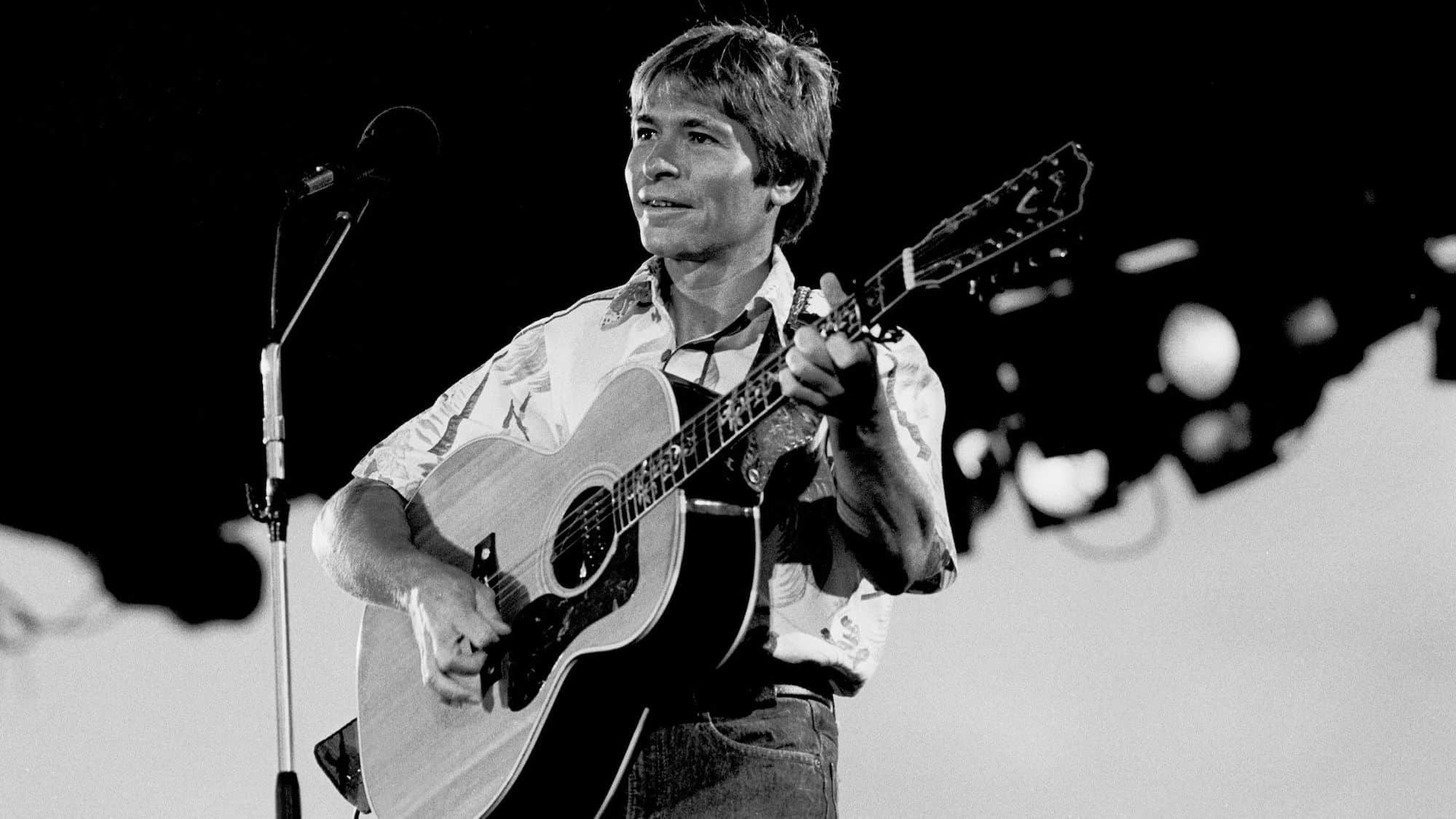
Given the succinct nature of this article, this historic account of Country Music will be a potted one. The genre is huge, the artists’ number in their thousands and the finer details of Country Music are reserved for a weightier narrative.
History Of Country Music
One introductory fact I discovered whilst researching this fascinating topic is that the collective title given to that broad range of styles that come under the banner of Country was hillbilly music.
This, as you’ll appreciate, is not the most pleasant term, nor one likely to attract a broad cross-section of listeners. What happened was that the recording industry re-titled the music in 1949 to the term we’re all a bit more familiar and happier with; Country and Western Music.
I feel it would be acceptable to state that the origins of Country (and Western) Music can be traced back to the West and South of the United States of America.
It was here that the brave folk looking for a new life in America came in the 19th Century. They travelled many hundreds of miles, often suffering great hardship en route from England, Ireland, Scotland and Wales.
Others travelled from different parts of Europe however these cultures dominated the new landscape.
From these foreign roots herald what we refer to today as Country Music. The timeframe is thought to be around the first few decades of the 20th century when Country Music gathered ground becoming a popular genre over the coming years.
Not only in Country Music do you hear the folk music of the original settlers through the instrumentation and lyrics but eventually the influence of Gospel and Blues music too. The musical ingredients of Country music are rich and colourful.
By the 1920s the Country Music scene was entering the ears of an ever-growing audience. Artists from this decade are considered to be amongst the first to be directly associated, labelled as Country Musicians.
History of any genre can be challenging to neatly capture. Many academics suggest that Country Music slots into several generations. These take us on a musical journey from the 1920s through to the 2000s and beyond.
This eighty-year yomp across the USA and later the world divides into six generations of Country Music artists and styles. Today, what is accepted under that big Country umbrella is a collection of music that those pioneering players from the 1920s could hardly imagine.
As the technology for recording developed alongside the possibility of commercial release, Country Music was there from the start. Many radio stations in the 1920s, notably in the Midwest and Southern areas of the USA, devoted considerable airplay to Country Music artists.
Fiddle players A.C Robertson and Henry Gilliland released one of the first Country recordings in June of 1922.
Their rendition of ‘Turkey in the Straw’ and Arkansas Traveller’, signals the very beginnings of Country. By 1924 Vernon Dalhart had a major triumph with his 1924 song ‘Wreck of the Old 97″ alongside Samantha Bumgarner and Eva Davis who became the first female Country stars.
In a 1927 recording, one of the most influential and important groups of musicians was captured on record in Bristol, Tennessee. These people were The Carter Family and Jimmy Rogers.
The reason why they were so vital at this stage of Country Music was perhaps down to the ingenious way Jimmy Rogers seamlessly combined just about every popular genre of music that was current including jazz, blues, hillbilly country and gospel.
Rogers penned many of his songs with one of the best being ‘Blue Yodel’ which supposedly sold over a million copies. “Keep on the Sunny Side” was another massive hit for the Carter family that is well worth a listen.
As Country Music moves into the 1930s (second generation), the movie industry helped significantly by including various kinds of Country Music in films.
As you might expect the Cowboy movies were the place to get your music heard and as a result many new Country starts were made. It also had the additional and lasting effect of moving Country Music closer to the mainstream.
The advent of the singing cowboy such as Gene Autry and Roy Rogers were major contributors to the success of Country Music.
All of this was vital as the Great Depression bit down hard on record sales. Founded in 1925 ‘The Grand ole Opry’ became the mainstay for many existing and upcoming Country stars.
It was a one-hour, weekly staged performance of Country Music that was broadcast live. Two stars of the time were DeFord Bailey and Roy Acuff. It is still going today.
Despite the horrors of The Second World War, Country Music continued to evolve. One man who railed against the purists was Bob Wills. What he did would have been unthinkable a decade earlier.
He added drums to his group the Texas Playboys, and the sound of Country was changed forever. The addition of percussion in this way allowed for Country to cross over and blend with Rockabilly which was just the kind of music people needed to lift their spirits after the Second World War.
The producers in Nashville quickly tapped into the new fusion and developed a new style of Country that the purists felt wasn’t Country at all. It boosted record sales and took Country into fresh, exciting musical arenas.
Great Country artists like Merle Haggard and Willie Nelson joined the ‘outlaw’ movement and did what they wanted with their music free of the more traditional conventions.
Between the 1950s and 1960s all the innovations of the previous decade including Country Boogie, Bluegrass, Honky-Tonk, and Western swing, provided the foundation for most Country artists.
It was during this time that John Denver began his climb to the lofty heights of fame, propelled by the revivalist movement of the time. By 1953 the first all-country radio station was on the air in Lubbock, Texas.
A new audience emerged through this and other stations who pointed their attention and their music towards the working-class Americans and in particular, truckers. The 1963 Country song by Dave Dudley titled ‘Six Days On The Road’ illustrates this nicely.
By the 1960s Nashville had created a multi-million dollar Country industry. Here is where we find legends like Jim Reeves and Patsy Cline. A style known as Countrypolitan made significant headway through the 60s and 70s aiming as it did at a more mainstream market.
The genre continued to evolve through the coming decades with the outlaw movement still going strong. Johnny Cash was a major figure throughout the 60s and 70s. His hit ‘Ring Of Fire’ still commands significant airplay.
Dolly Parton was on the scene in the 70s with her unique brand of Country, often paired with legend Kenny Rogers. Later followed Garth Brookes, LeAnn Rimes, and Shania Twain to mention only a handful of Country megastars.
Country music in all its forms is alive and kicking today; there’s something for everyone.


